When it comes to car ownership, one of the most overlooked but crucial components of the driving experience is the interior — the space where drivers and passengers spend nearly all their time.
While exterior design might turn heads and performance figures may dominate headlines, it’s the interior that influences how people feel about their car day after day, mile after mile.
A vehicle’s cabin isn’t just about comfort and aesthetics; it’s a direct reflection of an automaker’s priorities, engineering discipline, and attention to detail. And over time, the quality of a car’s interior can either become a source of pride or a persistent source of frustration.
There’s a world of difference between a cabin that stands the test of time and one that starts to crumble just a few years down the road. On one end of the spectrum, some automakers go the extra mile to craft interiors with high-quality materials, solid construction, and long-term durability in mind.
These vehicles often use soft-touch plastics, genuine leather, or sturdy synthetic alternatives, precise stitching, and tightly fitted panels that resist warping and rattling even after years of use. These interiors continue to feel refined and well-built long after the vehicle rolls off the lot, providing owners with an enduring sense of satisfaction.
On the flip side, some cars are designed with strict cost-cutting measures that prioritize initial affordability over lasting quality. In these cases, the interior may look acceptable at first glance, but over time, the weaknesses become clear.
Hard plastics begin to crack, surfaces fade or discolor from sun exposure, switches and buttons wear down, and panels start to loosen or rattle.
In harsher climates or with regular daily use, these fragile interiors can deteriorate quickly, diminishing the car’s value and eroding the driving experience. What once seemed like a good deal can turn into a maintenance headache as trim pieces break and replacements become necessary.
The disparity in interior quality isn’t always tied directly to a vehicle’s price tag. Some mainstream manufacturers have made impressive strides in producing durable, well-finished cabins even in affordable models. Meanwhile, some so-called premium vehicles have skimped on long-term material quality, prioritizing appearance over substance.
That’s why understanding interior durability is so important — it can inform not only buying decisions but also expectations for long-term ownership. A car might perform admirably in year one, but how it holds up in year five is often a better measure of its true value.
In this article, we examine two sides of the same coin. First, we look at five vehicles with rock-solid interiors — cars and SUVs that are known for their build quality, use of high-grade materials, and impressive longevity. These vehicles continue to impress owners long after their new-car smell fades, often outlasting rivals when it comes to interior resilience.
Then, we shift focus to five vehicles with interiors that tend to fall apart — models plagued by brittle plastics, fading panels, broken trim, and poor assembly quality that tarnish the ownership experience.
Whether you’re buying a new car, shopping used, or just passionate about automotive design, understanding which interiors are built to last — and which are not — can help you make better, more informed decisions.
A car’s interior isn’t just where you sit; it’s where you live when you drive. It should be more than tolerable — it should be enduring. So, let’s take a deep dive into the best and worst interiors in recent automotive history and explore why some cabins age with grace while others seem to fall apart at the seams.
Also Read: 5 Cars That Have Clean Titles at 200K Miles and 5 That Hide Lemon History
5 Vehicles With Rock-Solid Interiors
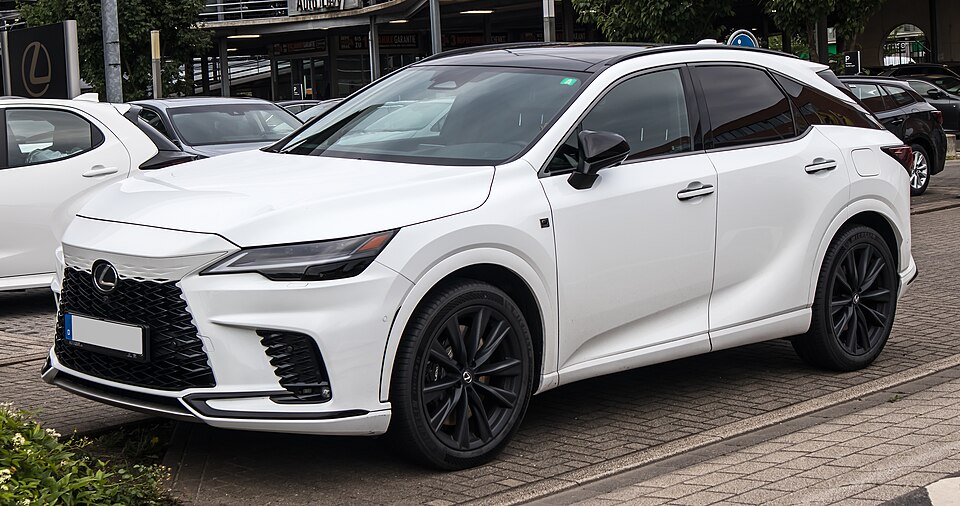
1. Lexus RX
The Lexus RX has long served as a benchmark for interior quality in the midsize luxury SUV segment. From the moment you open the door, the sense of precision and calm is unmistakable. The RX’s cabin is filled with rich, soft-touch materials, genuine wood inlays, and leather that resists wear even under heavy use.
Attention to detail is evident in the stitching, the door panel finishes, and even the way each control clicks or glides — all designed to convey a sense of quiet luxury. Lexus’s philosophy of “omotenashi,” or hospitality, is baked into every design decision, which shows in the interior layout’s elegance and function.
One of the most impressive aspects of the RX’s interior is its durability over time. Unlike some vehicles that start to show signs of interior wear after a few years, the RX holds up astonishingly well.
Owners often report that even after 100,000 miles, there are minimal signs of wear on the seats, dashboard, and controls. The climate control buttons remain crisp, and the soft surfaces don’t discolor or crack. UV-resistant coatings and premium finishes play a large role in maintaining the “new car” feel, even in sun-exposed regions.
What sets the RX apart is the solidity of its assembly. There are virtually no creaks or rattles, even after years of ownership.
The cabin remains quiet and refined, largely thanks to high-quality sound insulation materials and the tight tolerances with which the cabin is constructed. Even road noise is well-managed, providing a serene driving experience that many luxury vehicles strive for but few achieve at this price point.
Ultimately, the RX is proof that true luxury isn’t just about flash — it’s about long-term refinement, thoughtful materials, and interiors that are designed to age gracefully. It’s not just rock-solid in terms of feel; it’s resilient in the long run, which gives owners confidence that their investment will hold up both aesthetically and functionally.

2. Toyota Land Cruiser
The Toyota Land Cruiser is widely respected for its unmatched combination of mechanical toughness and upscale interior durability. Inside, the cabin strikes a masterful balance between rugged functionality and luxurious comfort. Materials are chosen not just for appearance, but for how they hold up under stress.
The switchgear is designed to function even in dusty, off-road environments, and the seating materials — whether leather or high-grade synthetic — are treated for exceptional resistance to wear and tear.
Land Cruiser interiors are purpose-built for longevity. You won’t find fragile trim pieces or delicate finishes here. Everything has a weight and tactile solidity to it — from the massive grab handles to the heavy-duty door sills and buttons that click with authority.
This makes the cabin ideal for environments where the vehicle might be exposed to dirt, water, or extreme climates. Toyota has engineered every interior component to withstand abuse without sacrificing comfort, making it a favorite among those who value resilience as much as refinement.
A key contributor to the interior’s legendary durability is Toyota’s strict quality control during manufacturing. The fit and finish are exemplary, with no sharp edges, misaligned panels, or poorly fitted trim.
Even after tens of thousands of miles over unpaved roads, owners report minimal rattling or squeaking, which is a testament to the vehicle’s over-engineered interior structure. The Land Cruiser was built for global use, from desert expeditions to icy tundras, and its cabin reflects that kind of versatility.
For many owners, the Land Cruiser is a long-term commitment — a vehicle kept for 15 or 20 years. Its interior is one of the main reasons it lasts that long in excellent condition.
Whether you’re hauling a family across continents or using it as an everyday commuter, the Land Cruiser’s interior will not only survive but continue to provide a premium, confident environment.
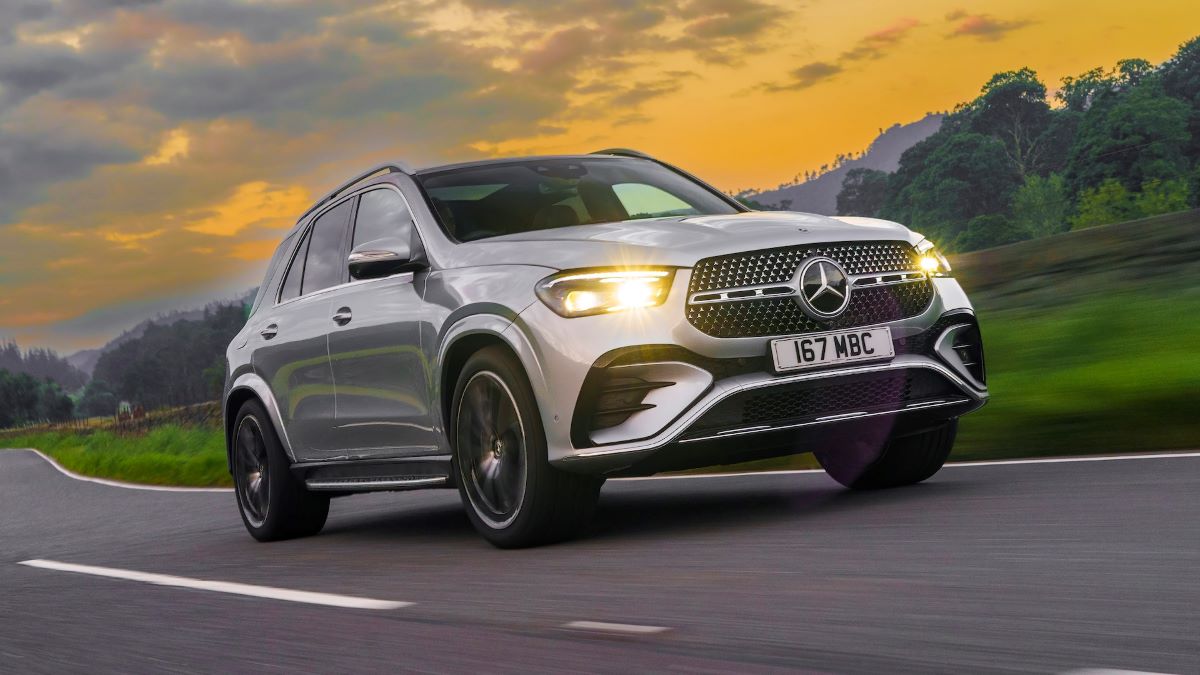
3. Mercedes-Benz E-Class
The Mercedes-Benz E-Class has always been a paragon of German engineering, and nowhere is this more evident than inside its cabin. Designed with surgical precision and an eye for timeless aesthetics, the E-Class interior effortlessly combines technology with tactile quality.
Rich materials — including real wood veneers, polished metal switches, and double-stitched leather — come together to create a space that feels sophisticated and durable. There’s a tangible sense of density in the materials, a feeling that everything has been built to a higher standard.
What makes the E-Class stand out is not just the quality of the materials, but how they are assembled. The panel fitment is impeccable; gaps are uniform and tight, and controls operate with a fluid, damped motion. Mercedes even fine-tunes the weight of buttons and knobs to give users a satisfying mechanical response — a level of detail most brands overlook.
The interior lighting is also elegantly integrated, offering ambient hues that enhance the mood without adding visual clutter or premature wear.
Over time, the E-Class continues to impress. Owners frequently report that dashboards remain soft and supple, buttons don’t wear shiny, and stitching stays intact even after years of use. Mercedes uses UV-resistant coatings and high-durability polymers that resist fading and warping. The seating foams retain their shape well, and the door cards and headliners do not loosen or discolor, even in warmer climates or high-mileage scenarios.
While the technology inside the E-Class may evolve over model years, what remains constant is the durability and integrity of the cabin’s core materials. Whether you’re buying a new E-Class or a certified pre-owned model with 60,000 miles, the interior will almost certainly feel solid, modern, and well-kept. It’s not just built to impress — it’s built to last.
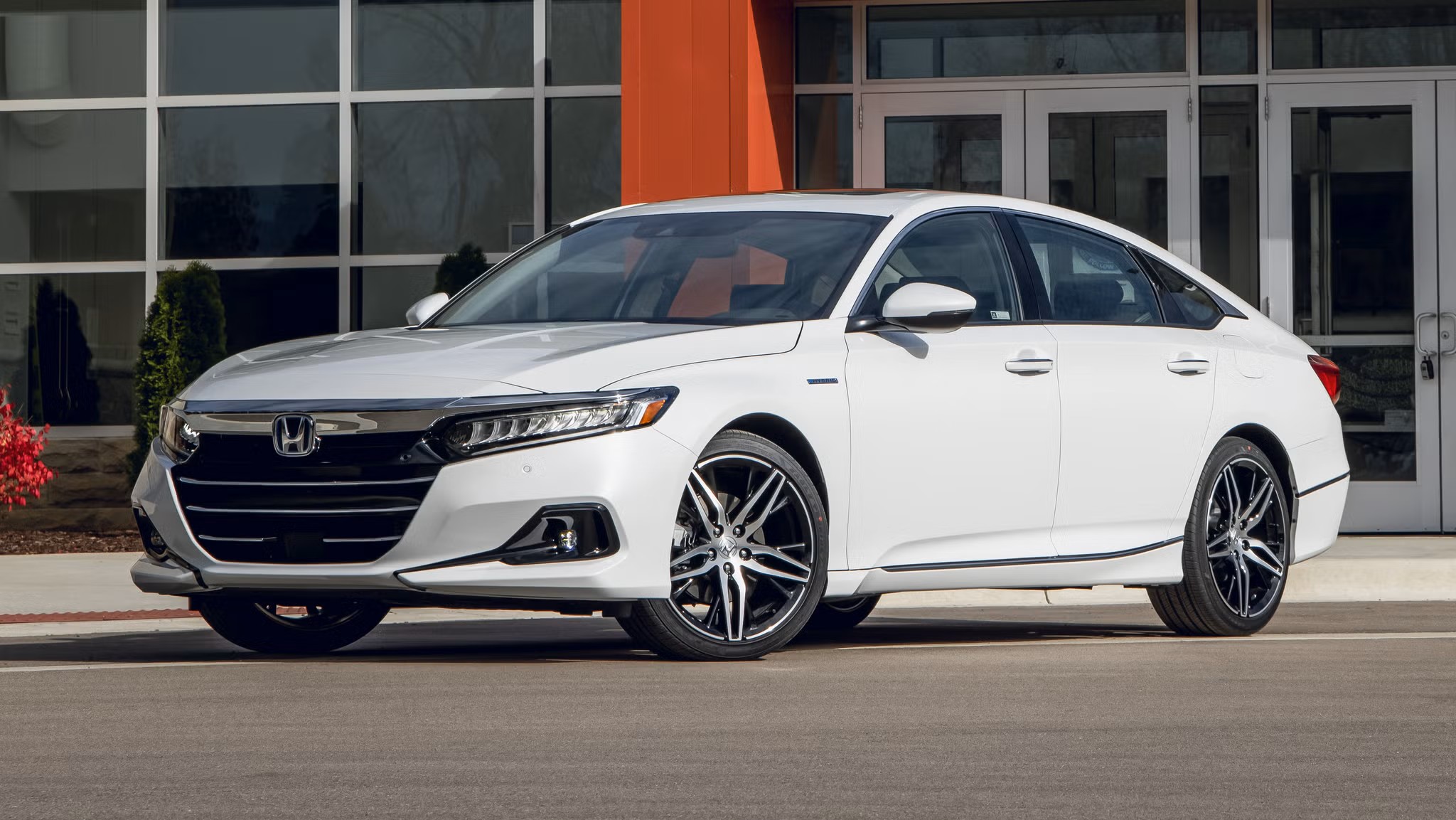
4. Honda Accord (2018+)
The modern Honda Accord — particularly the models from 2018 onward — has been widely praised for pushing mainstream sedans closer to luxury standards. Step inside and you’re greeted by a cabin that defies expectations for its price class.
Soft-touch plastics line the dash and door panels, and thoughtful details such as contrast stitching, metal-look trim, and tightly integrated infotainment screens elevate the feel beyond what one might expect from a non-premium badge.
More importantly, the materials aren’t just nice to look at — they’re built to last. Honda’s design team chose surface finishes that resist scratching and fading, particularly on frequently handled areas like window switches, door pulls, and center consoles.
Even in base trims, the plastics have a matte finish that hides wear, and the seats, whether cloth or leatherette, are treated with coatings that protect against stains and sunlight.
From an assembly standpoint, the Accord’s interior benefits from Honda’s consistently high build standards. There are few if any, rattles, even after years of ownership, and the panels maintain their alignment with minimal flex or looseness.
The climate control buttons retain their tactile sharpness, and touchpoints like steering wheel controls continue to respond crisply. This level of durability makes the Accord a top choice for commuters, families, and rideshare drivers alike.
What seals the deal is how well the cabin holds up under real-world use. Owners regularly report minimal signs of aging even after six or seven years — no peeling plastics, no broken trim pieces, and no dashboard cracks. Honda proves that you don’t need to spend luxury money to get an interior that will feel solid and dependable well into the car’s second decade of life.

5. Volvo XC90
Volvo’s XC90 interior embodies Scandinavian design principles — clean, elegant lines, a minimalistic layout, and premium materials used with restraint and taste.
However, beneath that sleek design lies an interior built with astonishing integrity. Every surface, from the dashboard to the rear cargo trim, feels robust and thoughtfully engineered. Volvo has chosen its materials with an eye for longevity, not just appearance, giving the XC90 a luxurious yet dependable cabin.
The tactile elements of the XC90 are especially well-executed. The knurled aluminum knobs, glass gear selector (in high trims), and matte-finish wood trim all feel solid and enduring. Even the touchscreen interface, which is central to the vehicle’s function, is made from durable components and resists fingerprints and scratches better than many rivals.
Volvo seats are also among the best in the business — ergonomically designed and upholstered in durable leather or synthetic blends that resist cracking and creasing.
Volvo’s commitment to sustainability translates into material choices that are not only environmentally responsible but also long-lasting. The headliner fabric resists sagging, the interior panels are thermally stable and show no signs of warping even in extreme climates, and the entire cabin feels like it’s been over-engineered to prevent degradation.
In long-term ownership reports, XC90 owners consistently note how the interior maintains its original feel far longer than they expected.
Perhaps the most striking thing about the XC90 interior is how it balances luxury with function. It’s not overly flashy, yet it feels expensive and solid in a way that earns respect over time.
It ages gracefully, and it’s designed to stand up to both family life and the demands of luxury SUV buyers, making it one of the most rock-solid interiors in its class.
5 Vehicles With Plastic That Crumbles
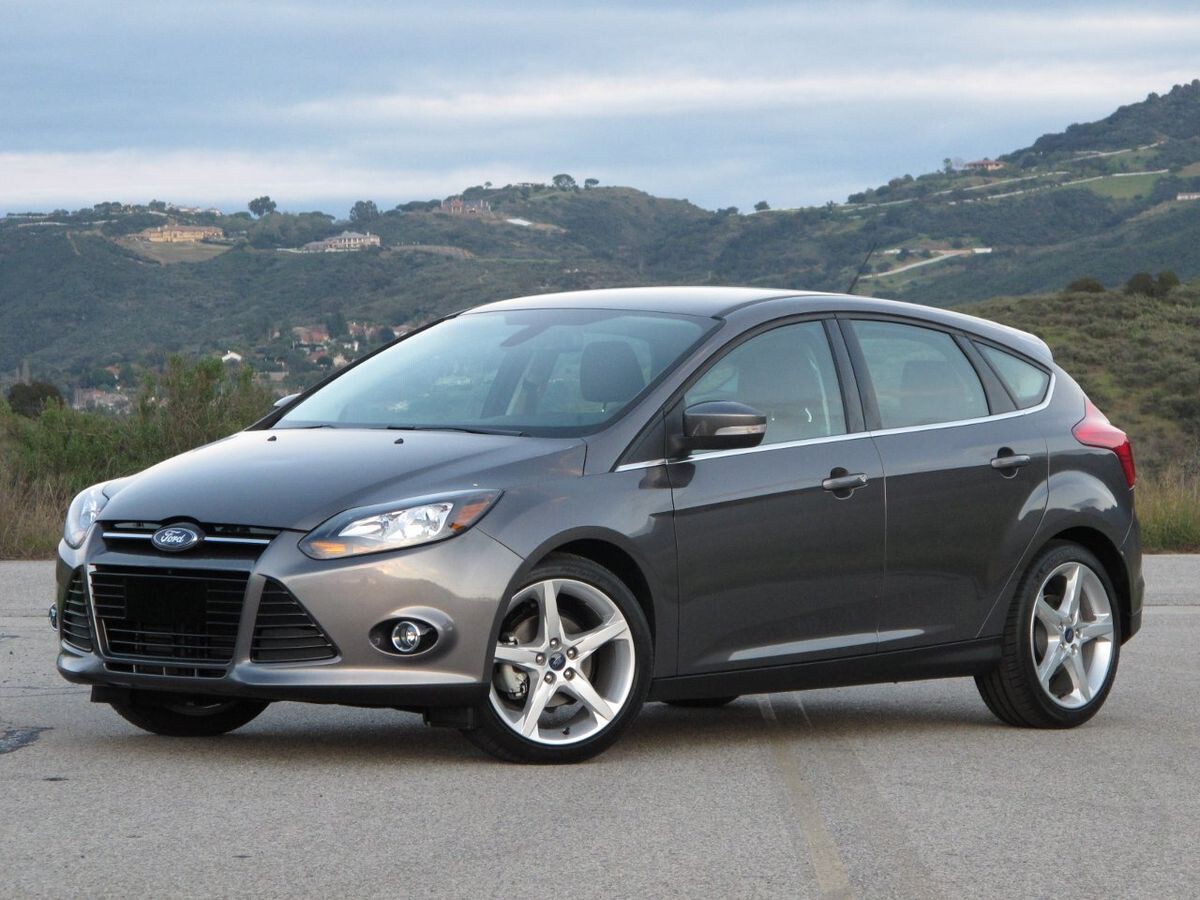
1. Ford Focus (2012–2016)
The Ford Focus from the early 2010s was meant to mark a global reinvention of the compact car for Ford, offering sporty handling and modern styling at an affordable price.
While it delivered on performance and driving dynamics, its interior quickly became the focus of criticism. The use of low-grade hard plastics throughout the cabin was a cost-cutting move that backfired in the long term.
Dashboards, center consoles, and door panels were composed of brittle materials that cracked, warped, and discolored under sun exposure.
Over time, owners began reporting various interior issues — rattling panels, buttons losing their labels, center console trims breaking at stress points, and door handle bezels detaching. The dashboard material, particularly near the defroster vents, was prone to warping due to repeated heat exposure. In warmer climates, the dash could pull away from its mountings entirely.
These were not isolated cases; a wave of owner complaints, forum posts, and even YouTube reviews documented the premature degradation, making it a common issue rather than a fluke.
The Focus also suffered from inconsistency in interior quality. Some trims received slightly better materials, but even higher trims were not immune to the cheap-feeling finishes and structural weakness of plastic parts.
Over time, the once-stylish interior design began to feel outdated and worn, not just visually but physically — knobs would loosen, and the glove compartment could develop a wobbly or uneven fit. Ford’s effort to modernize the compact segment was unfortunately undermined by material choices that didn’t hold up.
While the Focus remains a decent used buy for budget-conscious buyers due to its driving appeal and efficiency, the interior is a critical weak spot. Prospective owners are advised to inspect all interior plastics carefully and anticipate some reconditioning or replacement if the vehicle is more than a few years old.
The disappointment here lies in a car that had great bones but was let down by interior fragility that shouldn’t exist at such a fundamental level.

2. Dodge Caliber (2007–2012)
The Dodge Caliber is often remembered less for its utility or unique design and more for its severely underwhelming interior. At launch, the Caliber was Dodge’s attempt to enter the compact hatchback market with an aggressive design and affordable pricing.
Unfortunately, much of the affordability came at the expense of material quality. The interior was filled almost exclusively with hard, hollow plastics that felt more like recycled toy material than automotive-grade surfaces.
From the dashboard to the door cards, the plastics were coarse, shiny, and unforgiving. Owners often described the cabin as feeling “unfinished” or “cheap,” with minimal padding or refinement. Any touchpoint — armrests, climate control knobs, or the shift bezel — felt insubstantial and prone to damage.
Over time, even moderate use would result in fading, cracking, and sometimes disintegration. The center stack, which featured prominent and angular designs, was particularly susceptible to cosmetic damage, scratches, and even stress cracks near the gear selector.
Adding to the problem was poor fit and finish. Many Caliber owners experienced rattles, loose paneling, and clips that broke under basic maintenance like removing trim for radio replacement. Interior panels were often misaligned from the factory and would shift or warp over time.
Climate and age only exacerbated these issues, with reports of door panels separating from their frames and dashboard top layers peeling up due to sun damage or adhesive failure.
By the time the Caliber was discontinued, it had become somewhat infamous for its poorly executed interior. Even enthusiasts who appreciated the vehicle’s quirky features and utilitarian layout had to admit that it simply couldn’t stand up to time.
It’s now a prime example of how interior materials can make or break a car’s long-term reputation, and a cautionary tale for automakers tempted to cut corners on cabin quality.

3. Chevrolet Aveo (2004–2011)
The Chevrolet Aveo was GM’s budget-conscious global subcompact, and while it offered decent fuel economy and basic transportation, the interior felt like a product of relentless cost-cutting. Plastics were hard, shiny, and unrefined — a stark contrast even to contemporaries in the low-cost segment.
The dashboard, center console, and door trim were especially prone to cracking, fading, and discoloration, giving the cabin an aged look within just a few years of ownership.
The issue wasn’t just cosmetic. The structural integrity of the interior was also poor. Air vents would loosen and fall out, control knobs would break or detach entirely, and the glovebox often developed a misaligned or warped hinge, making it difficult to close properly.
The steering wheel and column trim felt hollow, and in some cases, plastic housings would begin to rattle or separate after just 30,000–40,000 miles. Cold weather seemed to amplify these problems, causing parts to become brittle and snap with minimal force.
The Aveo’s interior ergonomics were also hampered by the material quality. Due to the rigidity and low flexibility of the plastics used, any adjustment or removal of interior parts during repairs often led to damage.
Attempting to replace the stereo or dashboard components without breaking tabs or panels was nearly impossible. This led to higher maintenance costs and frustration among owners and mechanics alike.
While the Aveo was never meant to be luxurious, its interior shortcomings were too glaring to ignore. Even by budget-car standards, it underperformed.
Many competitors offered similarly priced vehicles with better materials and smarter designs. Today, the Aveo serves as a textbook example of how poor material selection can render an otherwise functional car nearly unbearable to live with over time.
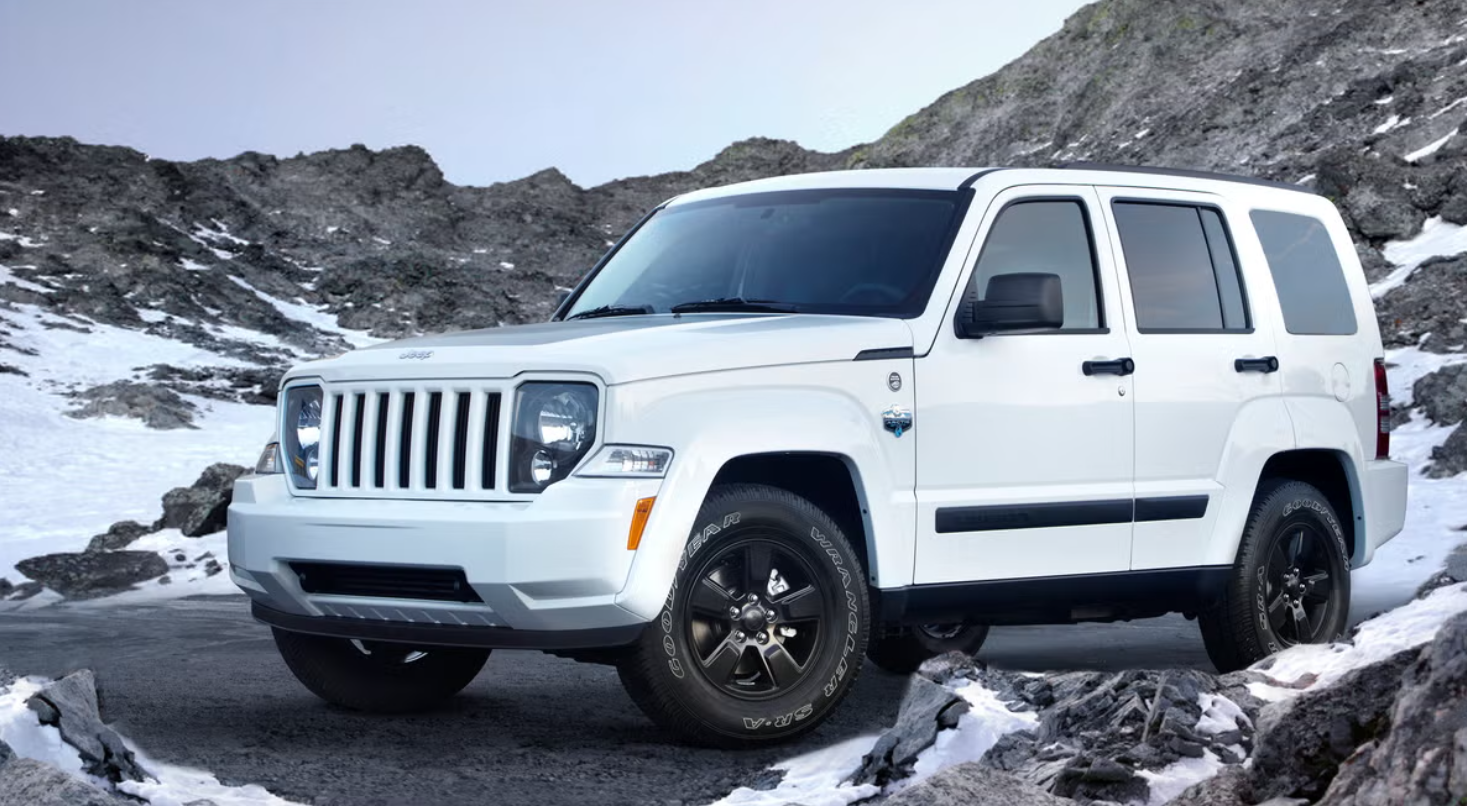
4. Jeep Liberty (2002–2012)
The Jeep Liberty offered a compelling value proposition: real off-road capability in a small SUV package. Unfortunately, that promise was undercut by a cabin that lacked the quality and refinement needed for modern consumers. The interior was constructed with coarse, rigid plastics that felt as though they belonged in a toy rather than a vehicle.
In both the first and second generations, the dashboard, door panels, and center console were particularly problematic, often cracking or fading with exposure to sunlight or fluctuating temperatures.
Even in relatively low-mileage Liberties, interior components have been known to degrade rapidly. The dash often warps or develops stress lines near the airbag and defrost areas. The center console lid, a frequent point of contact, is infamous for breaking or becoming loose.
Buttons on the radio and HVAC system lose their lettering, and the faux-metal trim around vents and knobs tends to peel or flake off after a few years. These visual signs of wear greatly reduce the perceived value and enjoyment of the vehicle.
Owners also commonly report rattling sounds and loosened panels after off-road use or over rough roads. While one might expect some rattles in a vehicle marketed for rugged use, the interior quality of the Liberty didn’t even hold up under normal suburban driving. Jeep’s reliance on hard, brittle plastics meant the cabin not only looked outdated after a few years, but also sounded worn-out, with squeaks, buzzes, and creaks emerging from every corner.
In hindsight, the Liberty’s interior didn’t live up to its rugged exterior promise. While the drivetrain could handle trails, the interior couldn’t even handle time. Buyers seeking adventure vehicles learned quickly that comfort and long-term interior integrity were sacrificed in favor of off-road hardware — a trade-off that many later came to regret.

5. Nissan Versa (2007–2012)
The first-generation Nissan Versa was praised for its roomy interior and affordability, but that praise rarely extended to the quality of the materials used. The cabin was filled with thin, easily scuffed plastics, and little effort was made to hide the car’s economy status.
The dashboard had a pebbled texture that seemed scratch-resistant but aged poorly, often fading or discoloring under sunlight. The door panels were similarly weak, with thin plastic skins over even thinner substrates, leading to warping and rattling as the vehicle aged.
Nissan’s cost-saving efforts were especially apparent in the center console and climate control area. The knobs felt flimsy, and the buttons wore quickly, with the backlighting failing prematurely in many cases.
The seat fabric, while decent initially, stained easily and was prone to tearing. In high-mileage Versas, interior sag and softness are commonplace — seats become misshapen, padding compresses unevenly, and headliners detach from the roof frame.
Another common complaint was the poor durability of moving parts: visors that broke off their mounts, cupholders that snapped under minimal pressure, and gloveboxes that developed persistent squeaks.
These weren’t one-off quality control issues — they were systemic design and material flaws affecting nearly all first-gen Versas. The issue became so widespread that some dealerships began carrying extra interior trim clips and replacements as routine service items.
While the Versa made sense as a basic commuter or student car, the trade-off came in the form of a cabin that aged like milk rather than wine. Today, even well-maintained examples show premature wear, undermining what could have been a more successful long-term ownership experience.
For buyers, the lesson is clear: not all cost savings are worth it, especially when it lead to an interior that begins falling apart before the engine does.
Also Read: 5 Trucks That Survive Abuse and 5 That Break Down From Daily Use
As we’ve explored in this article, the quality of a vehicle’s interior goes far beyond visual appeal or a pleasant first impression. It’s a long-term investment in comfort, usability, and satisfaction.
A well-built cabin, one that holds up over years of use, not only provides a more enjoyable driving experience but also contributes to a vehicle’s retained value and owner confidence.
Whether you’re embarking on daily commutes, long road trips, or quick errands, it’s the interior, not the horsepower or exterior paint, that interacts with you most intimately every single day.
Vehicles with rock-solid interiors demonstrate the power of good design, thoughtful engineering, and respect for the consumer. These models reflect a manufacturer’s commitment to durability and quality, often using higher-grade plastics, smart ergonomics, and tight assembly tolerances that reduce the likelihood of wear and tear.
From Lexus and Mercedes-Benz to the surprising build of modern Honda and Volvo interiors, these cars show that long-lasting quality doesn’t always require the most expensive materials — just intelligent design and high manufacturing standards.
Drivers of these vehicles often note how their interiors still feel solid, clean, and refined even after years of heavy use. There’s no dashboard warping, no mysterious squeaks, no knobs that have lost their markings.
Instead, there’s a sense of continuity — the confidence that what was carefully crafted at the factory hasn’t fallen apart with time. These interiors age like fine wine, and that contributes significantly to overall driver satisfaction, vehicle longevity, and brand loyalty.
On the other hand, the cars with interiors that crumble remind us of the risks of poor material choices and rushed assembly. Cost-cutting at the factory might save a few dollars on the production line, but it can result in a vehicle that ages prematurely.
From cracked dashboards in the Ford Focus to the brittle plastic of the Dodge Caliber and Nissan Versa, these cars show how fragile interiors can rapidly reduce a vehicle’s appeal.
The tactile feel of flimsy components, the sound of loose panels, and the unsightly effects of sun damage all become daily annoyances that build up over time.
It’s important to note that a failing interior doesn’t necessarily make a car mechanically unsound. Some of the vehicles discussed here still offer solid engines or capable drivetrains. But that disconnect between mechanical reliability and interior quality often leaves owners feeling let down.
After all, no one wants to drive a car that looks and feels like it’s falling apart — even if it still technically works. The interior is where personal connection with the car is forged, and when that begins to break down, it chips away at the driver’s overall confidence in the vehicle.
As automotive design continues to evolve, the hope is that more manufacturers will prioritize longevity alongside styling.
Consumers have become more informed and demanding when it comes to material quality, and automakers that invest in better cabins will continue to reap the rewards of customer loyalty and stronger resale values. Durability, after all, should not be a luxury feature — it should be a standard expectation.
In conclusion, while exterior design and performance specs often dominate the car-buying conversation, it’s the interior that ultimately defines long-term satisfaction. A rock-solid interior is a quiet promise from the manufacturer: “This car is built to serve you well for years.” And that’s a promise worth listening to.

